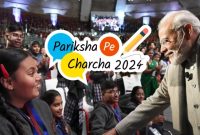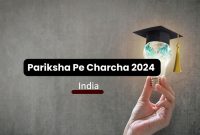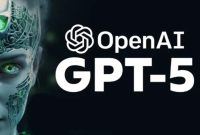Efanmail – Hello, dear readers! How are you? Today, we have an exciting and innovative tool to share with you. Imagine being able to transform your words and ideas into stunning visual images with just a few simple keystrokes.
Thanks to the latest advancements in artificial intelligence, turning words into visuals has never been easier. Introducing a free AI image generator that brings your text to life in a whole new way.
So, without further ado, greetings and please continue reading to discover the power of this remarkable technology.
Introduction to AI Image Generation: Turning Words into Visuals
Artificial Intelligence (AI) Image Generation is a revolutionary technology that has the ability to turn words into stunning visuals. By harnessing the power of advanced machine learning algorithms, AI Image Generation enables computers to create realistic images based on textual descriptions.
This groundbreaking technology has various applications, from generating artwork and illustrations to assisting in virtual reality and video game development.The process begins with feeding the AI system a textual prompt, describing the desired image.
The AI then analyzes the text and learns to generate corresponding visual elements, such as objects, scenes, and colors. Through continuous training and exposure to vast datasets, the AI becomes increasingly adept at accurately interpreting and translating text into visually appealing images.
AI Image Generation has the potential to revolutionize numerous industries. Artists can use this technology as a source of inspiration or even collaborate with AI systems to create unique and captivating artworks.
Designers can quickly generate visual prototypes based on textual descriptions, saving time and effort. Additionally, AI Image Generation can enhance virtual reality experiences by generating realistic environments and characters.
Although AI Image Generation has shown remarkable progress, challenges still exist. Fine-tuning the generated images to match human expectations and creativity remains a constant area of research. Ethical considerations surrounding the use of AI-generated visuals also need to be addressed.
In conclusion, AI Image Generation is an exciting technology that bridges the gap between words and visuals. With its ability to transform textual descriptions into realistic images, it opens up new possibilities in various industries.
As this field continues to advance, we can expect even more impressive and imaginative results from AI-powered image generation systems.
Related Articles
- Unlocking High CPC Niches for Blogging: A Comprehensive Guide
- Best Niche for AdSense Approval
- Exploring Profitable Niches with Low Competition in 2024
- Free Netflix Intro Template: Download Now with No Copyright
Harnessing the Power of AI: Creating Images from Text
The power of artificial intelligence (AI) has revolutionized many aspects of our lives, including the creation of images from text. With AI technology, it is now possible to generate visual representations based on written descriptions.
This breakthrough has opened up new possibilities in various fields, such as design, advertising, and content creation.One important aspect to consider when creating images from text is typography. Typography plays a crucial role in ensuring that the text is visually appealing and complements the overall design.
It is important to have sufficient contrast between the text and other design elements. However, it is also important to avoid clashing colors or using colors that are too similar, as this can make the text difficult to read.
Alignment is another important factor to consider. It is essential to have a logical purpose behind the chosen alignment style. Avoid using justified alignment, as it often creates irregular spacing and random white spaces, making the text appear messy and hard to read.
It is recommended to choose a single alignment style, such as left alignment, for the body copy.When it comes to generating images from text, AI technology can analyze the written descriptions and generate visual representations accordingly.
This process involves converting the text into visual elements, such as shapes, colors, and textures. The AI algorithms can interpret the text and generate images that accurately represent the intended meaning.
The applications of this technology are vast. In the field of design, AI-powered tools can assist designers in quickly creating visual mockups based on written descriptions. This can save time and effort, allowing designers to focus on other aspects of the creative process.
In advertising, AI-generated images can be used to create eye-catching visuals that effectively convey the intended message. Content creators can also benefit from this technology by easily transforming their written content into visually appealing images for social media or blog posts.
It is important to note that while AI technology has made significant advancements in generating images from text, it is still a developing field. The accuracy and quality of the generated images can vary depending on the complexity of the text and the capabilities of the AI algorithms.
However, with ongoing research and advancements in AI, we can expect further improvements in the future.In conclusion, harnessing the power of AI to create images from text has opened up new possibilities in various fields.
Typography and alignment play crucial roles in ensuring visually appealing and readable text. AI technology can analyze written descriptions and generate visual representations accordingly. While this technology is still developing, it holds great potential for design, advertising, and content creation.
The Evolution of Image Generation Technology: AI at Work
The Evolution of Image Generation Technology: AI at WorkArtificial Intelligence (AI) has revolutionized many industries, and image generation technology is no exception. Over the years, AI algorithms have become increasingly sophisticated, enabling machines to generate realistic and high-quality images.
This evolution has been driven by advancements in deep learning and neural networks.Early image generation techniques relied on simple algorithms that could generate basic shapes and patterns. However, with the advent of deep learning, AI models can now generate complex and intricate images that closely resemble those created by humans.
This has opened up new possibilities in various fields, including art, design, and entertainment.One of the key breakthroughs in image generation technology came with the introduction of Generative Adversarial Networks (GANs).
GANs consist of two neural networks: a generator and a discriminator. The generator creates images, while the discriminator evaluates and provides feedback on the generated images. Through an iterative process, GANs learn to generate increasingly realistic images by constantly improving the generator’s output based on the discriminator’s feedback.
Another significant advancement in image generation technology is the use of conditional GANs. These models allow users to provide specific instructions or constraints to generate images that meet certain criteria.
For example, an artist could use a conditional GAN to generate images of landscapes with specific colors or compositions.AI-powered image generation technology has also found applications in fields such as fashion, interior design, and advertising.
Designers can now use AI algorithms to generate realistic product images and visualizations without the need for costly and time-consuming photoshoots or prototypes.Looking ahead, the future of image generation technology seems promising.
Researchers are constantly exploring new techniques and architectures to further enhance the capabilities of AI models. With advancements in hardware and computational power, we can expect even more impressive and realistic images to be generated by AI.
In conclusion, the evolution of image generation technology has been driven by AI advancements, particularly in deep learning and neural networks. From simple shapes to complex and realistic images, AI algorithms have come a long way in mimicking human creativity.
As AI continues to evolve, we can anticipate further breakthroughs in image generation technology, opening up new possibilities in various industries.
Unleashing Creativity: Transforming Text into Visual Art
Unleashing Creativity: Transforming Text into Visual ArtIn today’s digital age, creativity knows no bounds. The convergence of technology and art has opened up new avenues for self-expression and unleashed a world of possibilities.
One such avenue is the transformation of text into visually captivating art. By harnessing the power of typography, graphic design, and imagination, artists are able to breathe life into mere words.With a stroke of a brush or a click of a mouse, the letters dance and intertwine, forming intricate patterns and mesmerizing visuals.
Through careful selection of fonts, colors, and layouts, artists can convey emotions, convey messages, and captivate audiences. The marriage of words and visuals brings forth a powerful combination that transcends language barriers and resonates with people from all walks of life.
This creative process not only challenges the artist’s technical skills but also encourages them to explore new perspectives and push the boundaries of their imagination. It is a journey of self-discovery, where each artwork becomes a reflection of the artist’s unique voice and style.
As we witness the transformation of text into visual art, we are reminded of the limitless power of human creativity. It is a testament to our ability to transform the mundane into the extraordinary, to find beauty in the simplest of things.
So let us embrace the magic of words and visuals, and unleash our creativity to create art that inspires, moves, and transforms.
Exploring the Magic of AI: Generating Images with Words
Artificial Intelligence (AI) has made significant strides in recent years, particularly in the realm of image generation. One of the most fascinating applications of AI technology is its ability to generate images based on textual descriptions.
This groundbreaking capability allows users to simply describe an image in words, and AI algorithms can then create a visual representation of that description. Through the convergence of natural language processing and computer vision, AI has unlocked the potential to bring textual concepts to life in the form of stunning visual art.
This innovative fusion of language and imagery holds immense promise for various industries, including design, advertising, and entertainment. As AI continues to evolve, the possibilities for creating and exploring the magic of image generation with words are truly endless.
From Text to Image: How AI Transforms Words into Visuals
Artificial Intelligence (AI) has revolutionized various aspects of our lives, and now it has made its way into the creative realm. With the ability to transform words into visuals, AI is changing the way we perceive and interact with information.
Through advanced algorithms and deep learning techniques, AI can analyze text and generate stunning visual representations.From books to news articles, AI can extract key concepts, emotions, and themes, and translate them into captivating images.
This technology has immense potential in fields such as marketing, education, and entertainment. Imagine a world where complex ideas are effortlessly communicated through eye-catching visuals.AI-generated visuals not only enhance the aesthetic appeal but also facilitate a more engaging and immersive experience for the audience.
From infographics to illustrations, these visuals provide a dynamic and interactive way to consume information. As AI continues to advance, the possibilities for transforming text into visuals are endless, opening up new avenues for creativity and expression.
In conclusion, the integration of AI in transforming text into visuals is reshaping the way we communicate and engage with information. With its ability to generate captivating visuals, AI is revolutionizing various industries and offering exciting possibilities for the future.
Creating Visual Stories: The AI Image Generation Revolution
In today’s digital age, the emergence of AI image generation has revolutionized the way visual stories are created. This cutting-edge technology enables creators to generate lifelike images and visuals with astonishing realism and detail.
Through advanced algorithms and machine learning, AI image generation has opened up new possibilities for artists, designers, and storytellers to bring their visions to life in ways previously unimaginable.
As this technology continues to evolve, it is reshaping the creative landscape and empowering individuals to unleash their imagination like never before.
The Art of Translation: Converting Text into Visual Masterpieces
Translation is not just about converting words from one language to another; it is an art form that transforms text into visual masterpieces. The process of translation requires skill, creativity, and an understanding of both the source and target languages.
A translator must carefully consider the nuances, cultural references, and context of the original text to ensure an accurate and culturally appropriate translation.One of the key challenges in translation is capturing the essence of the original text and conveying it in a visually appealing and engaging way.
Translators often have to make choices about word choice, sentence structure, and tone to effectively communicate the message in the target language. They must strike a delicate balance between staying faithful to the original text and making it accessible to the target audience.
In addition to linguistic considerations, translators must also take into account the medium in which the translation will be presented. Whether it’s a book, a website, or a movie, each medium requires its own set of skills and techniques.
For example, translating a novel requires a different approach than translating a website or a marketing campaign. Translators must adapt their style and tone to suit the medium and the intended audience.
The art of translation goes beyond simply converting words; it involves capturing the emotions, nuances, and cultural references embedded in the original text. A skilled translator can breathe life into a translation, making it resonate with the target audience and creating a connection between cultures.
Through their craft, translators play a vital role in bridging language barriers and fostering understanding and appreciation for different cultures.In conclusion, translation is an art form that involves much more than just converting text from one language to another.
It requires skill, creativity, and an understanding of both the source and target languages. Translators have the power to transform words into visual masterpieces, capturing the essence of the original text and making it accessible to a wider audience.
Their work plays a crucial role in fostering cross-cultural understanding and appreciation.




